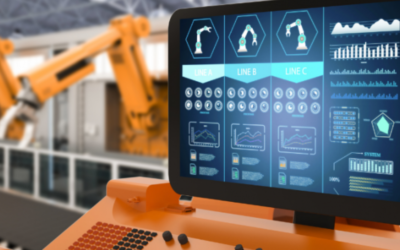As More IoT Devices Connect Through Cellular Networks, Two Companies Join Forces to Simplify and Secure Connectivity
10
FEBRUARY 2021
Pente Networks Marketing
IoT is hard, and distributed IoT implementations that are increasingly connected on cellular networks can be complex and riskier – and more expensive – than end buyers of full-stack IoT solutions may think.
Matt Hatton, a founding partner of Transforma Insights, recently penned a report summarizing the elements required to connect thousands or even tens of thousands of end-points and illustrating the choices within the cellular range of IoT connectivity protocols, sponsored by Eyese and Thales Group, who partnered to create what they say is the world’s first plug and play device to AWS cloud solution, Intelligent Cloud Connect.
Their join solution integrated modules and connectivity that work globally, set up via Amazon AWS marketplace, a single service that works universally, simplified MQTT AT commands, zero-touch provisioning into AWS IoT Core and AWS IoT Services, pre-integrated device security automatically deployed to the module with centralized policy management, single pane of glass management via AWS, and last – but certainly not least – simplified connectivity billing via AWS Marketplace based on MQTT message, not Kbyte based data packages.
Simplification, stability, and security are the “holy grail” of IoT and Industrial IoT, and many companies and ecosystems are chasing that dream in parallel to the work Eyese and Thales are doing. With most IoT deployments being relatively localized, as the industry itself grows, so grows the rolling out of international, super distributed solutions, which can create nightmarish scenarios for IT and OT teams when it comes to the provision of global cellular connectivity given the number of options (and different rules in different countries).
“Perhaps the defining characteristic of the Internet of Things is the dizzying array of different participants in the value chain: chipset and module manufacturers, hardware vendors, connectivity providers, software platforms of all shapes and sizes, billing providers, data managers, cloud service providers, systems integrators and application developers,” Hatton writes in the report. “Any developer needs to navigate their way through this landscape.
It is indeed a fact that IoT, with all its parts, remains an incredibly diverse, fragmented, and vexing domain, creating interoperability challenges, security vulnerabilities, and more, making decision-making harder for the companies funding and embarking on IoT projects.
There are more than a dozen network protocols, local and distributed, that can be used to connect devices, and while 5G is still broadly unavailable on a global basis, the benefits of ultra-reliable low latency communications (URLLC), especially for “end-points in motion” like connected vehicles, will fuel innovation and do so massively once 5G (and 6G after that) cells proliferate.
For now, cellular operators have been relying on NB-IoT and LTE-M, or license-exempt spectrum, including LoRa and Sigfox, which extend battery life and are relatively inexpensive. While those solutions work locally, global, universal connectivity is an end-state that will only happen when there are the same kinds of roaming agreements as we have seen in mobile voice and data applications. (Several companies, including monogoto and JpU, are making progress in this area using mass-produced and affordable SIM cards and setting up P-LTE networks for enterprises).
“The patchwork of different technologies, not to mention the diverse range of frequency bands which they all use, creates a headache for any application developer,” Hatton says. “Which technology do you choose to ensure that your device will be connected for its whole lifetime, without incurring excessive additional bill-of-materials costs?”
According to Transforma Insights, despite deployment challenges, IoT has grown rapidly and is on track to reach 25.4 billion connected IoT devices in 2030, of which 5.4 billion will be cellular connected.
The growth in the volume of IoT devices over the last few years attracted hackers’ attention, and doubtless, this will continue as the growth continues. Security persists as being typically perceived as the single biggest challenge for adopters of IoT.
Security challenges are increasing too, and Hatton says embedding security, “designed in from the start to incorporate all aspects of security, from the device all the way to delivering encrypted data to the cloud,” is critical, citing legislation being passed in the US, UK, Australia, Japan and EU which may read as “guidance” now, but pave the way for “more ambitious, specific and far-reaching regulation in future.”
With the impact of the cloud, Hatton also says developers must prepare for the ongoing impact of hyperscalers (Amazon Web Services, Microsoft Azure, and Google Cloud, to name a few). “At the least, the delivery of application data to the cloud becomes an integral part of most solutions, and therefore it is increasingly important for IoT solutions to include zero-touch integration with these cloud platforms,” he writes.
The report is an excellent read for those new to IoT and those veterans in the space who wish to understand more, especially about what to expect as global cellular, large, and highly distributed enterprise and industrial-strength systems rise.
Originally published on IoT Evolution World
Similar Blogs
As 5G Spreads Across the US, CBRS Unlocks New Opportunities for Rural and Urban Communities
As we start off the new year with new challenges, investment in enterprise 5G deployments that capitalize on the economic benefits of using the Citizens Broadband Radio Services (CBRS) is driving investments toward the $1 billion mark, according to the Dell’Oro Group.
The Inevitable Explosion of Enterprise 5G Networks
Today, technological innovations are rapidly reshaping the landscape of a variety of industries, and none more so than the introduction of 5G. While 5G networks began rolling out in the United States and around the world in 2018, the technology is now expected to fuel transformative new technologies, not just for consumers but also for businesses, infrastructure, and defense applications. The rapid spread and adoption throughout the country has already led to the advent of private 5G networks.
For Industrial IoT, Will the Future of Enterprise 5G Networks be Federated?
As more industrial companies implement more connected solutions, the concept of federated networks is taking off as an opportunity for entrepreneurial exploration and a strong alternative to legacy “telecom” providers who are fighting to maintain their “walled gardens.”


